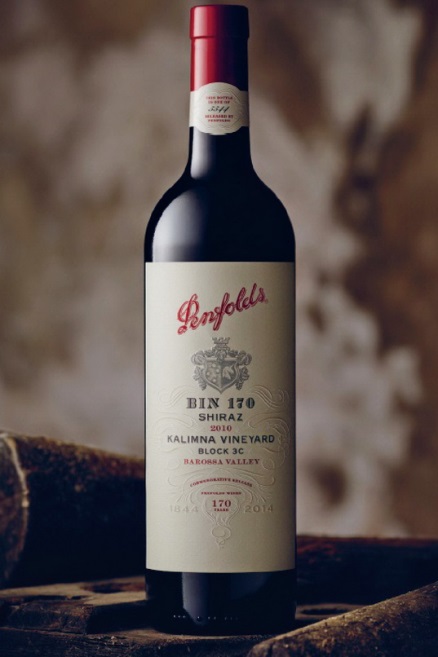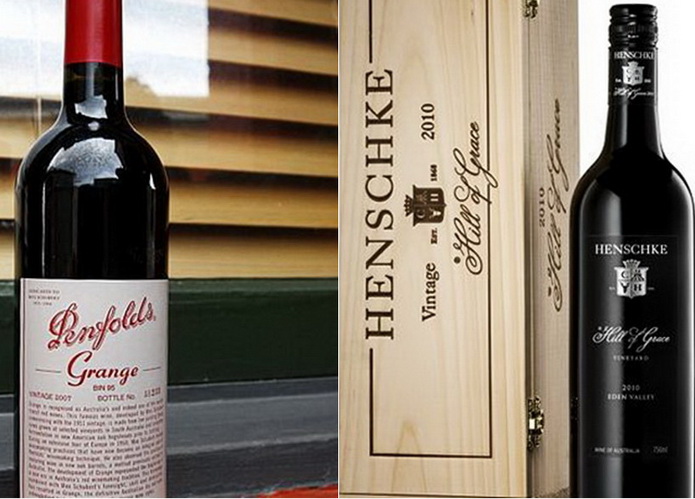Blank on Purpose
Can you Improve a Wine by Raising its Price?
I wrote a post under this heading a while back, and a few weeks ago a loyal subscriber wrote about his experience with the iconic Aussie red. His post could be titled Why I No longer Drink Hill of Grace.
‘I look forward to and read the advice in your email,’ Des wrote. ‘As a person who didn’t drink until i travelled overseas and discovered there was life outside a 1950s Aussie country pub culture. I returned and read Len Evans column and booklets and then under some very bright wine merchants ie licensed wine/grocery stores advice i built a collection of 300 bottles.
Went overseas again and arrived back in the seventies to drink Hill of Grace etc. So i have always followed good advice and you have continued my luck. NOW i know longer drink Hill of Grace.
As an 81 year old I thought i should share my introduction to Henschke wines and how over time I and Henschke reconnected given your recent newsletter’s foot note.
As a construction worker, but one who had been round the world by the mid 1960s, I had returned to Perth and bought my wine and spirits from wine merchants, one of whom sold my brother and I Henschke wines and said if you dont like it, the restaurant on the Perth Esplanade will all ways buy them off you.
Well we went off to travel the world again and I arrived back in the seventies with an idle cellar. At the time of my marriage, I plus the new wife were taken out for dinner by 12 of our closest friends and I took – it was bring your own – 4 of 1960s Henschke Hill of Grace, and Mount Edelstone wines.
Some years later I was at a luncheon, strawberries, champagne and cheese, with several of the original wedding dinner reps plus others, and the same luncheon host. When he saw the three Henschke wines, corks drawn, said are you still recycling those bottles? No one touched them after that, so I took them them home. And I said to the host you will never ever sip any of the remainder of my cellar.
Many years later in Hobart at one of my favourite restaurants, the Mona Lisa, they had a vintage wine list, no names but you could ask for a wine off the hidden list. He used to buy estate cellars. The owner one day said I am not going to let you access the vintage unless you ring on the day and say you will be there for lunch – I want to air my choice. On one occasion he served a Hill of Grace, this is the 1990s, we ordered a second and he said I never serve two of those for lunch.
And we didn’t pay hundreds.
Kim, as a subscriber i thank you for your efforts, your contributions go beyond the wine itself; in my early adulthood the only source about wine for tradies was Evans in the Bulletin plus our three wine merchants. i am a buy local but I weaken occasionally and buy interstate.
Regards
Des
PS: I also picked up the deep woods ebony. We were at the NSW WINE SOCIETY 50th dinner at the Must Restaurant in Perth, and Deep Woods were present and announced they had won the Jimmy Watson, and my table neighbour was Dennis Lilly. After the dinner, Deep Woods laid on the Sparking wine for the diners, what memories of wine, companies – and I married into a Swan Valley grape grower soldier settler family.
Thanks for the story and the feedback, Des
OK, let’s answer the question: Can you improve a wine by raising its price?
I read with interest that Stephen Henschke wants to push the price of Hill of Grace past the price of Grange. Why? ‘When you think of rarity and story,’ says Stephen, ‘Hill of Grace is clearly the most precious wine.’ It follows that it should cost more, he argues.
Such crisp logic takes your breath away, doesn’t it? On our website, we provide abundant proof that price is a fickle guide to the quality of wine. Last year, Decanter magazine gave the trophy for Australia’s best Shiraz (and best red) to a $37 Shaw & Smith 2012. And late in 2013, a $27 Grant Burge Filsel Shiraz 2010 won Winestate magazine’s Great Shiraz Challenge. Also in 2013, a $17 Pepperjack 2012 won the Visy Great Aussie Shiraz challenge.
For this contest, Editor Peter Simic bought samples of Grange and Hill of Grace since their makers don’t enter them in competitions or wine shows for fear of embarrassment. It was a good move by Peter. This is what I wrote after studying the results: ‘ … near the end of the 20 pages of reviews we find Grange and Hill of Grace sitting in a corner like two school boys who’ve misbehaved in class. 3 stars out of 5 is a disgrace for wines that carry price tags in the $600 – $800 range.’
Wines as Luxury Goods
Stephen Henschke does harbour some doubts about raising the price of his Hill of Grace, as Alan Kohler writes in the Australian – he’s worried worried about alienating loyal customers. ‘We have a lot of old and loyal customers who are precious to us,’ Stephen told Alan, ‘we don’t want to lose them by pricing them out.’ And here I was thinking that the current $600 price tag would ‘price most of us out.’ Silly me.
‘It’s all a bit ironic in the light of last night’s story on the ABC’s 7.30 program,’ writes Alan Kohler, ‘about heartbroken Riverland grape growers ploughing in their vineyards because they can’t make enough money to cover their costs.’ As we’ve said before, it’s a different market for Hill of Grace and Grange: they’re not selling wine; they’re selling luxury goods. Think of Rolex, Louis Vuitton or Hermes.
Rarity and Story
‘When you think of rarity and story,’ says Stephen, ‘Hill of Grace is clearly the most precious wine.’ James Halliday lends some support to that argument, writing that ‘Hill of Grace is a single 8 ha vineyard, with only 4 ha planted to Shiraz. The average yield is 2.5 tonnes/ ha; 10 tonnes of grapes will provide around 700 dozen bottles, a drop in the ocean of Grange’s reputed 7000 to 9000 dozen per year.’
It’s a fair point but when it comes to story, that of Grange and Max Schubert is a better one than Henschke’s, except for Stephen’s mother Doris shooting her husband Cyril in 1979 while he was asleep. Doris was charged with his murder, but acquitted in February 1980. Apparently, stress and anti-depressants were to blame – 5 anti-depressants, a tranqiliser and a sleeping pill. More in Gabriel Wendler’s piece The day Doris accidentally shot Cyril.
Stephen is a perfectionist, but Cyril was an innovator: he was one of the first winemakers in Australia to put grape varieties on his elegant labels, and one of the first to put the vineyard names on his reds: Hill of Grace and Mount Edelstone. After Cyril’s death, Stephen and his wife Prue set out to show the true potential of their reds.
We should keep in mind that Grange was already famous when Hill of Grace was just a good Barossa red. Halliday says: ‘The Hill of Graces made – shouldn’t that be Hills of Grace? – over the past 20 years are better than their predecessors.’ It’s not that simple, since the earlier Hills of Grace were a different style; they were elegant creatures in the old Claret mould. The wines Stephen made followed the new fashion of using super-ripe fruit, expensive small oak, and various tricks to create dense, high alcohol reds. Grange got the same treatment after Max died.
The Upper Crust
 Jeremy Oliver argues that ‘a wine does not improve, and its perception does not increase simply if its maker adds $200 to its price.’ He adds that wine companies ‘do not control the preferences of gatekeepers like sommeliers, critics, bloggers, high-end collectors and the like.’
Jeremy Oliver argues that ‘a wine does not improve, and its perception does not increase simply if its maker adds $200 to its price.’ He adds that wine companies ‘do not control the preferences of gatekeepers like sommeliers, critics, bloggers, high-end collectors and the like.’
He seems to overlook the fact that Penfolds cranked the price of Grange up by an additional $100 overnight after the 2008 scored 100 points from Robert Parker’s Wine Advocate. That didn’t stop wine writers raving about Grange.
Jeremy also argues that Grange is no longer Penfolds’ most expensive wine since the Bin 620 Cabernet Shiraz 2008 was released at $1000, and Bin 170 Kalimna Shiraz 2010 for $1,800. We wrote about the wisdom of that HERE but, when we talk about Australia’s best red, we’re talking about regular releases not one-off specials.
Regardless of the release price, you won’t get your money back
That’s the awful truth. Here’s the advice I gave in a previous post on this subject: Never buy Grange at the time of its release. Why not? Because you can buy virtually any vintage of Grange, all the way back to the great 1976, for less than the current retail price. It’s the same with Hill of Grace, as you can see from Wickman’s fine wine auction summary. Most of the older wines sit between $200 and $500 at auction, a clear indication that Hill of Grace is already overpriced. Cranking the price up further won’t make any difference to the auction price. As the saying goes: the market will decide.
We’ll let Chris Shanahan from the Canberra Times have the last word on this, as he ponders the tricky business of investing in fine wine. As I suggested earlier, if you just want a good single vineyard red from the Barossa that is made with a great deal of care, Mount Edelstone is much better value than Hill of Grace. It sits alongside Hill of Grace in Langton’s list of Australia’s top 21 wines for good reason, and you can buy some at Nicks / Vintage Direct for the modest price of $130 a bottle.
Footnote
Gabriel Wendler points out that the labels of both of the top Henschke reds carry the letters ‘C H’, and adds: ‘Unfortunately, Hill of Grace, like Grange Hermitage, has become a commodity, traded rather than drunk, and so driving its price to ridiculous levels. In 1981 a bottle of Hill of Grace 1977 cost $5.70.’
Yes, and in the mid eighties we were buying Mount Edelstone for a dollar less. Then the wine world went mad, and it hasn’t regained its sanity yet.
Kim


